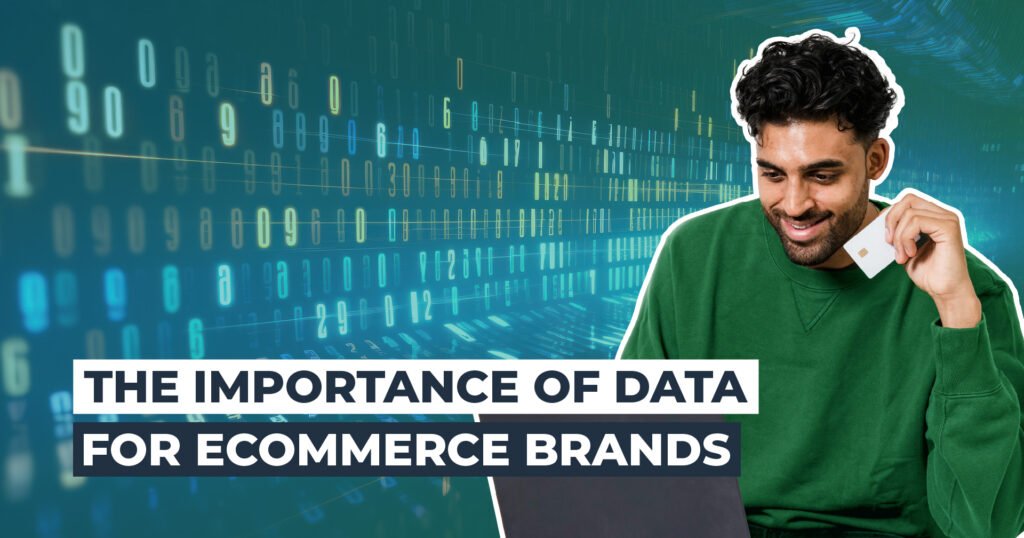There are certain types of data every ecommerce business owner should have at their fingertips to make well-informed decisions. Do you have every piece of data you need to run your brand? Let’s test if you have what you need, explore key takeaways for what data can accomplish, and go into the must-haves for all ecommerce brands from small to mid-market to enterprise level.
Testing Your Data Proficiency
There are key questions you can ask yourself at any time to test your brand’s data acumen.
- What is your average shipping cost per order?
- Which of your SKUs has the highest carrying cost per order?
- What is the most commonly cited reason for your product returns?
- Could ordering more inventory less often, or less inventory more often, save you money?
- Does splitting your inventory across multiple warehouses make sense for your business?
If you can’t answer all these questions, that’s a problem. Either you don’t get enough data, you don’t have easy access to it, or you have so much data coming in from diverse channels that there’s no easy way to see the big picture.
Why Data Matters in the Modern Market
In today’s omnichannel retail industry, accurate, real-time data is a critical resource. Without it, you are operating in the dark. With it, your brand can reach new heights in all avenues of selling. The key, of course, is the type of software or platform you’re using, as that can filter complex, abundant data into digestible resources to your benefit.
“ShipMonk gave us the freedom to sell DTC, sell B2B, and integrate our returns solution allowing us to control and automate our entire operation from a single fulfillment software.”
– Founder of high-growth accessory brand
With a cloud-based world, there’s no excuse for a warehouse or inventory management system that can’t give you accurate information whenever you need it. Hence ShipMonk’s order fulfillment platform mentioned above. But data isn’t just about maintaining and elevating your sales channels; it’s also about setting your team up for success and learning from the past to elevate your ecommerce business for the future. So, when you are digging into a data management upgrade, also consider this:
- Everyone from your customer service reps to product development, sales, marketing, and finance teams should be able to find the information they need.
- Any data system should allow you to establish key performance indicators and quickly check their status at any given time.
Data Must-Haves
Whether you’re actively looking to migrate to a new order fulfillment partner, or haven’t considered it, now could be the time to determine if you have the data management must-haves for a successful brand.
1.) Cross-Channel Visibility
It is important for omnichannel brands to have a seamlessly integrated, centralized system that syncs data from all channels including ecommerce, retail, and wholesale operations. Growing brands in particular need to focus on this because of all the tools and resources out there. Take ShipMonk—we have 100+ integrations seamlessly integrated with our order fulfillment platform so that all your data is streaming into one easy-to-use and find place. With that kind of cross-channel visibility, you can compare sales data, check on order statuses, and manage inventory levels without flipping back and forth between platforms.
2.) Real-Time Information
Long-term decisions and split-second decisions both rely on real-time data. Whether you’re planning in advance for peak season or another holiday, or are just determining in-the-moment restock needs, the difference between a good and bad decision comes down to the data provided by your warehouse and inventory management system. Tracking individual SKUs, past peaks and valleys for sales, and demand forecasting through data all lead to less dead inventory sitting around, plus fewer stockouts and backorders.
“We love that ShipMonk tracks inventory by lot number and SKU. Not only are we able to monitor what we have in stock, but we can also track what products we have in each warehouse.”
– Founder of health & wellness brand
3.) Control
Accessing data is one thing; controlling operations from that same system is another. Imagine being able to add SKUs seamlessly, create bundles, forecast inventory levels, use serialization and lot control to trace inventory, split-ship backorders, authorize returns and more, all from the same system. You shouldn’t have to imagine it, because it’s 100% possible. You need control of your data to grow and scale as a brand, and you need the software that provides it.

4.) Easy Access
Any data management system should be easy to use and accessible to the people who need it. As noted, all your key teams from customer service to marketing should be able to find the information they require to do their jobs effectively. Additionally, it’s not just about having data, but sorting through it simply to get answers in the formats you need. For example, by glancing at a dashboard, drilling into a customer’s order history, or generating a custom report.
5.) Notifications
A modern warehouse and inventory management system should alert stakeholders based on pre-set parameters for low stock levels, shipping delays, fraud detection, reorder points, return status, and more. Notifications are the critical “watchtower” that keep your customers informed about their orders and you informed about everything. As a whole, notifications are a key component of keeping customer satisfaction high and your business in good standing.
6.) Performance Tracking
Any data system should allow your brand to establish key performance indicators and quickly check their status at any given time. Ecommerce KPIs might include:
- Sales Trends
- Inventory Turnover Rates
- SLAs (ShipMonk has guaranteed SLAs)
- Customer relationship data
7.) Transparency
Every aspect of an order is important, from price of shipping to delivery windows to supply chain hold ups. All data related to ALL your business matters should be clear so you know what you’re looking at in terms of time and, of course, cost. ShipMonk, for instance, believes in transparent pricing and billing so ecommerce brands are always in the know about where their money is going and can adjust budget accordingly if need be. If you don’t have that kind of transparency, which not all 3PLs (and definitely not 4PLs) always offer, then your finances aren’t 100% clear. That’s never where you want to be. Our clients can see exactly what they’re paying in fulfillment, storage, shipping, and more in all sorts of views, like: costs by function, by order, by line item, by day, or by year.
“The dashboard is so user friendly. I just check in every now and then to make sure nothing’s out of stock. ShipMonk allows me to focus on the other aspects of my business because I know fulfillment won’t have issues. And we’re saving a lot of money in shipping.”
Founder of apparel brand
Making Data Work for You
If your data management system is lacking in the areas of warehouse, order, inventory, or transportation, it’s time to retool your internal systems. And if your systems don’t have the capacity for that kind of change, make a decision for your brand that will maximize efficiency while protecting your finances. Migrate to a 3PL with advanced software that can manage all of the above and features customer-centric operations that ensure your data can work for you.
Contact the ShipMonk team today to begin migrating to an order fulfillment partner that handles data efficiently on all fronts.





